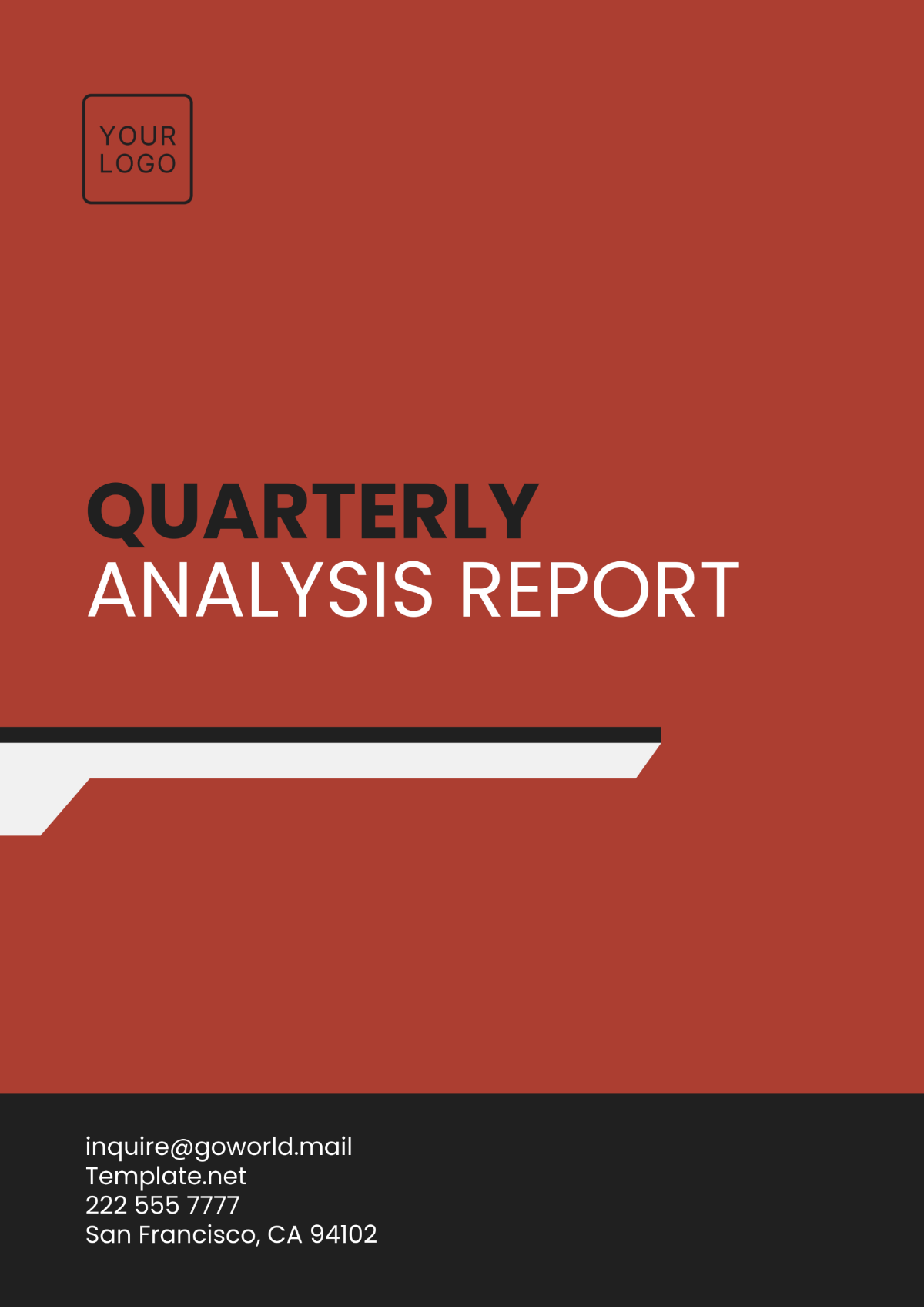Cryptocurrency SWOT Market Analysis
I. Executive Summary
This SWOT analysis provides an in-depth look at the cryptocurrency market from 2025 to 2050, highlighting key trends, opportunities, and risks within the digital assets ecosystem. The analysis reveals that cryptocurrencies have transitioned from a niche financial product to a mainstream investment and payment method, with broader adoption driven by advancements in technology and growing institutional interest. Despite significant challenges, such as regulatory uncertainty and environmental concerns, cryptocurrencies continue to provide high investment returns and the potential for decentralizing traditional finance.
II. Market Overview
A. Definition and Scope of Cryptocurrency
Cryptocurrencies refer to digital or virtual currencies that use cryptography for security and operate on decentralized networks using blockchain technology. They provide a peer-to-peer financial system, enabling transactions without the need for intermediaries such as banks. The scope of cryptocurrencies has expanded beyond traditional coins like Bitcoin and Ethereum, incorporating decentralized finance (DeFi) platforms, non-fungible tokens (NFTs), and more.
B. Historical Development of Cryptocurrencies
Since Bitcoin's creation in 2009, cryptocurrencies have evolved significantly. By 2025, Ethereum introduced smart contracts, paving the way for decentralized applications (dApps). In 2050, digital currencies have become ubiquitous, with over 500 distinct cryptocurrencies and a wide variety of blockchain technologies tailored for different use cases, including finance, healthcare, and supply chain management.
C. Market Size and Growth Projections
As of 2050, the cryptocurrency market is valued at approximately $[00] trillion, a 10-fold increase from its $[00] trillion market cap in 2025. The global cryptocurrency adoption rate has reached [00]%, with over 5 billion people actively engaging with crypto products. Projected growth indicates the market could double by 2060, driven by technological advancements and institutional investments.
D. Key Players in the Cryptocurrency Space
Major players in the cryptocurrency market include centralized exchanges such as Binance, Coinbase, and Kraken, as well as decentralized finance protocols like Uniswap and Aave. Additionally, blockchain projects like Ethereum, Polkadot, and Cardano have seen significant growth. The growing influence of institutional investors, including firms like Grayscale and Fidelity, is contributing to the market’s stability and mainstream adoption.
III. Strengths
A. Technological Innovation
The cryptocurrency sector has consistently innovated with improvements in blockchain technology, such as enhanced privacy features and scalability solutions. The introduction of Layer 2 scaling solutions like Optimistic Rollups and zk-Rollups has alleviated congestion on major networks, improving transaction speed and reducing fees. Additionally, interoperability between blockchains has opened doors for seamless cross-chain transactions.
B. Global Accessibility
Cryptocurrencies are accessible to anyone with an internet connection, democratizing financial services in regions with limited banking infrastructure. Over the past decade, crypto adoption has surged in developing nations, with countries like India and Nigeria seeing mass adoption for remittances and everyday payments. This access to global finance has helped bridge the financial inclusion gap, with 2.5 billion people now using cryptocurrency for daily transactions.
C. Decentralization and Autonomy
A key strength of cryptocurrencies is their decentralized nature, which minimizes reliance on centralized financial institutions and governments. This has resonated with users who seek privacy and autonomy over their financial assets. For example, Bitcoin has remained resilient as a store of value due to its decentralized consensus mechanism, which ensures its integrity and security.
D. Potential for High Returns
Cryptocurrencies have offered substantial returns, particularly for early investors. In 2050, Bitcoin’s price has surged from $[00] in 2040 to $[00] million, attracting new entrants to the market. As blockchain technology matures and institutional capital increases, the potential for future returns continues to drive investor interest, particularly in altcoins with strong use cases and scalability.
IV. Weaknesses
A. Market Volatility
Despite the maturation of the cryptocurrency market, volatility remains a key challenge. Bitcoin, for example, has experienced significant price fluctuations, with a [00]% drop in Q2 2050. While volatility can present opportunities for traders, it creates barriers for adoption among more risk-averse investors and consumers.
B. Regulatory Uncertainty
Cryptocurrency regulation remains a complex issue, with governments around the world creating inconsistent frameworks. While countries like Switzerland and Singapore have embraced cryptocurrencies, others, such as China, have imposed stringent regulations. In 2050, many countries are still grappling with how to regulate decentralized finance platforms and digital asset exchanges.
C. Security Concerns
Although blockchain technology offers enhanced security, the broader crypto ecosystem faces persistent threats from hackers and fraudsters. In 2049, a major exploit on a DeFi platform resulted in the loss of $[00] billion worth of assets. The continued evolution of security protocols is vital to ensuring trust in the crypto space, especially as new attack vectors are discovered.
D. Limited Mainstream Adoption
Despite significant growth, the adoption of cryptocurrency for everyday purchases remains limited. Major retailers and financial institutions have been slow to integrate crypto payments, and usability challenges persist, particularly for those unfamiliar with digital wallets and private keys. User experience remains a barrier to widespread adoption.
V. Opportunities
A. Technological Advancements
As the cryptocurrency space matures, opportunities exist for new technological advancements. The integration of artificial intelligence (AI) with blockchain is poised to revolutionize predictive trading and enhance network security. Additionally, advancements in quantum computing are being closely monitored for their potential impact on cryptocurrency cryptography.
B. Institutional Investment and Adoption
Institutional investment continues to grow, with hedge funds and pension funds increasingly adding cryptocurrencies to their portfolios. The announcement of BlackRock and Goldman Sachs launching crypto-focused investment vehicles in 2050 has further legitimized the market. This institutional backing is expected to bring greater liquidity and stability to the market.
C. Decentralized Finance (DeFi) Growth
DeFi has expanded into areas such as insurance, lending, and derivatives, providing users with alternatives to traditional finance. By 2050, DeFi platforms have outpaced traditional banks in transaction volume, and the sector is forecasted to grow by [00]% annually over the next decade. The rise of decentralized autonomous organizations (DAOs) is also reshaping governance models in the crypto space.
D. Central Bank Digital Currencies (CBDCs)
The emergence of CBDCs presents new opportunities for collaboration between cryptocurrencies and government-backed digital currencies. In 2050, several nations, including the EU and U.S., have launched their own CBDCs, providing a framework for crypto integration within the global financial system. This partnership could foster broader adoption and create new use cases for cryptocurrencies.
VI. Threats
A. Regulatory and Legal Challenges
Regulatory uncertainty remains one of the most significant threats to the cryptocurrency market. Governments are increasingly looking to impose tighter controls on crypto assets, especially in light of growing concerns over money laundering and terrorism financing. The possibility of a global regulatory crackdown could stifle innovation and reduce investor confidence in the space.
B. Market Manipulation and Scams
While the cryptocurrency market has become more sophisticated, issues with market manipulation persist. In 2048, a major price manipulation event involving a "whale" investor led to a market crash that wiped out billions of dollars in value. As the market matures, regulators and platforms must work together to combat scams and prevent large-scale manipulation.
C. Environmental Impact
The energy consumption of cryptocurrencies, particularly those using Proof-of-Work consensus mechanisms like Bitcoin, remains a contentious issue. In 2050, critics continue to argue that the carbon footprint of mining operations is unsustainable. Solutions like Proof-of-Stake (used by Ethereum 2.0) and renewable energy-powered mining are helping mitigate the environmental impact.
D. Competition from Traditional Financial Systems
The rise of Central Bank Digital Currencies (CBDCs) is seen as a direct competitor to decentralized cryptocurrencies. While CBDCs offer government-backed stability, they pose a potential threat to the decentralized ethos of the cryptocurrency space. Furthermore, advancements in traditional financial systems, such as instant payments and blockchain integration, may reduce the appeal of cryptocurrencies for everyday transactions.
VII. Competitive Landscape
A. Key Cryptocurrency Exchanges and Platforms
Exchange | Market Share (%) | Key Features |
|---|---|---|
Binance | 22% | Wide asset offering, low fees |
Coinbase | 15% | User-friendly interface, regulatory compliance |
Kraken | 12% | High security, fiat-to-crypto integration |
B. Major Cryptocurrencies
Bitcoin remains the dominant cryptocurrency, but Ethereum and emerging blockchains such as Solana and Avalanche are gaining market share with faster transaction speeds and lower fees. The growth of Layer 2 solutions and interoperability features has leveled the playing field, allowing smaller cryptocurrencies to gain traction.
C. Emerging Blockchain Projects
New blockchain projects are focusing on scalability, privacy, and energy efficiency. Polkadot has introduced a multi-chain framework, while Cardano emphasizes research-driven development. These projects are positioning themselves as alternatives to Ethereum, particularly in DeFi and enterprise adoption.
VIII. Strategic Recommendations
A. Adoption Strategies
To foster wider adoption, cryptocurrency projects must focus on enhancing user experience by simplifying wallet setups and improving transaction interfaces. A partnership with global payment processors like Visa and Mastercard could significantly expand the reach of cryptocurrencies by enabling their seamless use in everyday retail transactions. Additionally, educational campaigns aimed at demystifying blockchain technology and cryptocurrency usage will play a crucial role in attracting less tech-savvy users and ensuring broader global acceptance.
B. Risk Management
As the cryptocurrency market is inherently volatile, investors should adopt a risk-averse approach by diversifying investments across multiple assets and sectors, including traditional financial assets alongside digital currencies. Exchanges and wallets must invest in robust security measures, including multi-factor authentication and insurance options, to protect against hacks and loss of funds. Moreover, staying informed about changing regulatory landscapes and complying with global standards is essential for navigating legal uncertainties and mitigating financial risks.
C. Growth and Expansion
Cryptocurrency projects should focus on entering emerging markets, particularly in regions with underdeveloped financial systems, where blockchain technology can offer significant advantages such as remittance solutions and access to decentralized finance. Expansion into traditional industries such as real estate, healthcare, and supply chain management could provide new use cases, further embedding cryptocurrencies into mainstream business operations. Additionally, by forming strategic alliances with government bodies for CBDC integration, cryptocurrency projects can position themselves as partners in creating hybrid financial ecosystems, increasing their legitimacy and adoption.
D. Sustainability and Environmental Efforts
To address the environmental concerns surrounding cryptocurrency mining, projects must adopt energy-efficient consensus mechanisms, such as Proof-of-Stake or hybrid models that require less computational power than Proof-of-Work. Incentivizing miners to use renewable energy sources, such as solar and wind power, would reduce the carbon footprint of mining operations and align the industry with global sustainability targets. Furthermore, leading crypto projects could initiate a unified industry standard for environmental accountability, fostering positive public sentiment and attracting eco-conscious investors.

















































